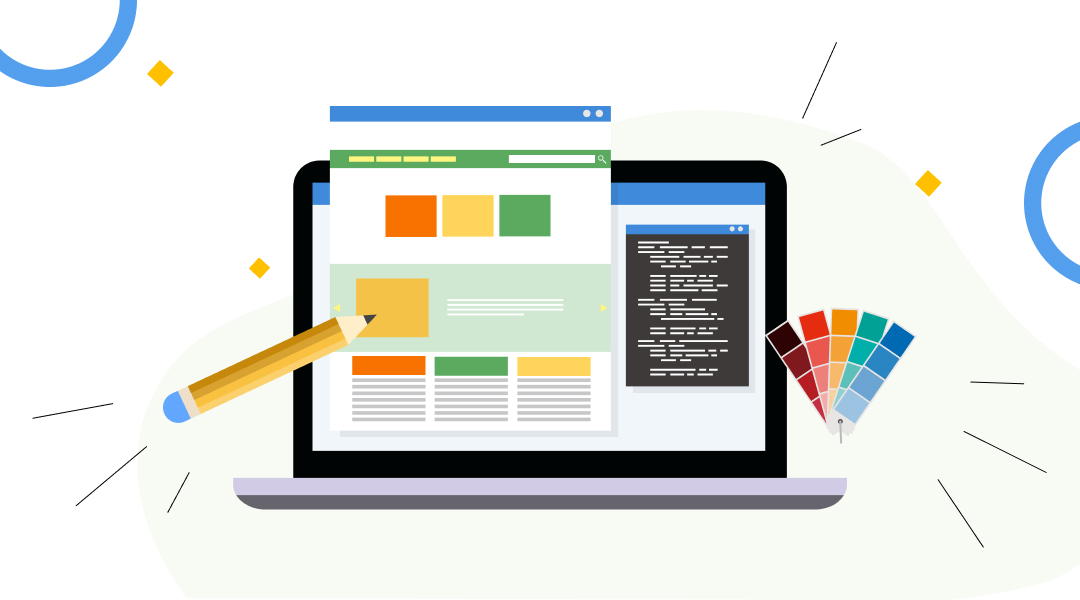Nowadays, if you are not online, you don’t exist.
Think about it: your potential or current readers might want to Google you. What do you want them to find? Random information scratched from all the corners of the internet or a neat author website?
The answer is obvious.
We will show you how to build a great author website that attracts your target audience.
Besides, you will get useful insights about:
- how to build an online identity;
- author website tips;
- must-have author website elements;
- best author website examples;
- what to put on an author website;
- best website designs for authors;
Let’s get cracking.
Why you need an author website
You might be wondering what the benefits of the author website are. The truth is that any business or product needs an online presence.
Here’s what the author website helps you achieve:
- Build an online identity
The best part about the website is that you are in charge. You decide what information to share with your target audience. It’s up to you to choose the layout of your author website, what pictures to use, what testimonials to publish, etc. As you might have guessed, the keyword is “you”, so go ahead and build a solid online foundation.
- Boost book sales
One of the fundamental purposes of the author website is to sell more books. It doesn’t mean you have to build an e-commerce platform that’s only dedicated to selling your writing. No, that’s a bit too much. Instead, you should collect and choose some information that will intrigue the readers. Encourage them to get to know you better through your books. You can promote the books by including a section for each of them with detailed descriptions, high-resolution book covers, your author comments, etc. The world is your oyster.
- Build an author brand
Enhance your credibility and leave an impression through your website. Use your author website to capture the readers’ attention at first sight. Keep in mind that the website’s first impressions are 94% design-related. That means the readers might be thrown off by an overly complicated design, lack of clear navigation, too much text, or overwhelming content. Make sure your website design is appropriate since it will function as a key recognition tool for your author brand.
- Grow your email list
An author website is a splendid place to invite people to subscribe to your newsletter. Email lists are essential not only to sell the books, but also to promote and share recent updates, services, and other useful information. And finally, direct the readers to a platform where they can place an order. Keep in mind that emails are one of the most personal ways to approach someone. So be careful when you enter the email private property. Don’t spam your readers too often with non-relevant information.
Stick to the author website’s main goals and enjoy the results.
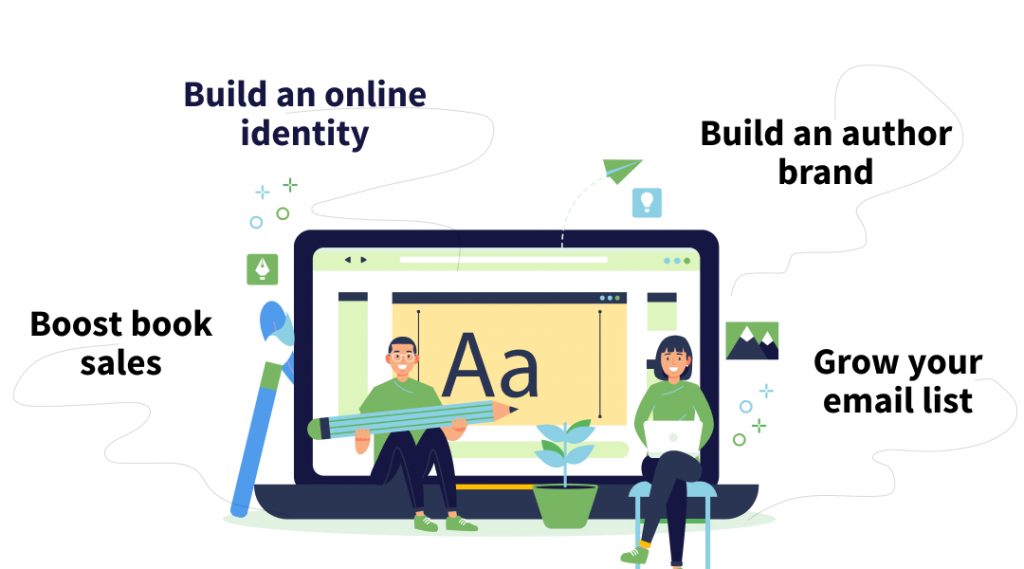
Now, let’s cover some basics when it comes to the technical aspects of the author website. We will walk you through some important author website elements. Buckle up.
Author website tips
If you’d like to create an informative, user-friendly website, you should pay attention to the following:
- navigation
- clarity
- branding
- author funnel
- search engine optimization
- calls to action
Too many complex terms? Don’t worry. We’ll boil it down for you. Keep reading.
Navigation
Clear navigation on a website is very important. Usually, your website navigation structure should allow someone to land on any page on your site and find what they need within three clicks.
If the visitors can’t figure what to do with all the sections and links, they will just leave. Well, you don’t want that to happen.
- A solid piece of advice: don’t try to reinvent the wheel. You can check out a few websites that you like (they don’t even need to be author websites), decide on the navigation style, and use it on your website. Follow web conventions to meet online users’ expectations.
- Also remember: you should have a user-friendly language in the navigation menu. Sure, we all sometimes want to get creative and use fancy words to stand out in a crowd. The navigation tool-set is not the right place to do it. Let’s say everyone is used to a Home button. If you suddenly rename it to House, you will just compromise the clarity and confuse your author website visitors.
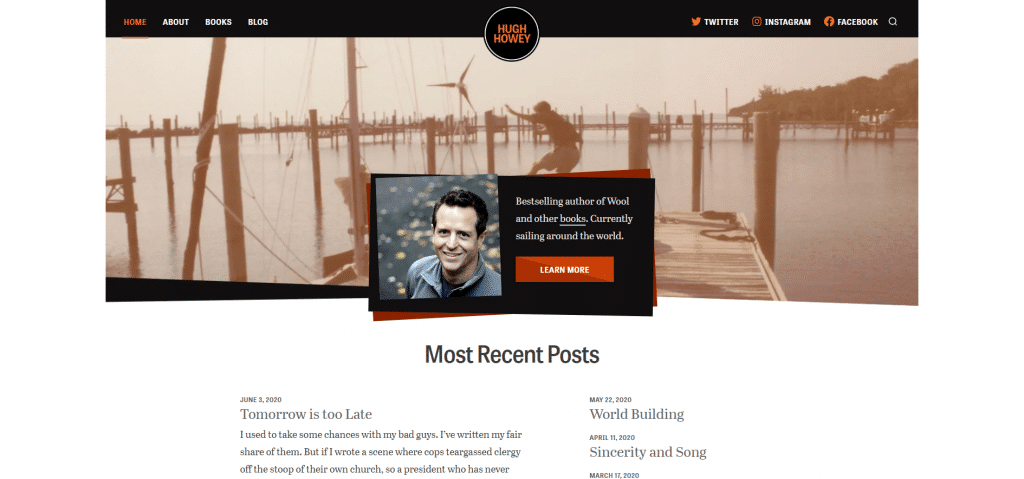
Clarity
Don’t overwhelm the website visitor with too much information. They should gently receive the information without wondering how long they still need to keep scrolling down. Let’s narrow it down a bit, and talk about images and text on your author website.
Images
Choose delightful images, book covers, and your author headshots.
- Don’t present everything you have in your possession. Make sure all the images are of good quality. Don’t use too many random graphics just to make it “pop”.
- Do you want the photo or graphic to be the centerpiece? The first thing the eye sees? If so, place it in the central position. If not, maybe the photo or graphic element is related to some text, and it can be placed next to the text to stress it.
Text
It’s important not to overdo the writing on a page as well.
- Place only relevant information.
- Avoid complex and long sentences.
- Use catchy, short, and right to the point sentences.
- Divide bigger chunks of text with subheadings, set some parts of the text in bold.
- The number of words on a page should range from 200 to 900.
- Don’t neglect the power of white-space on your web page.
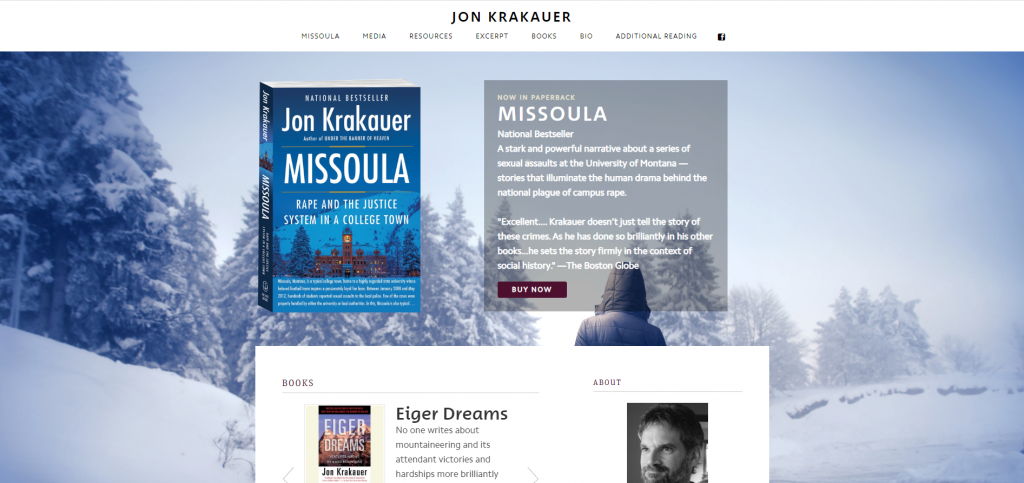
Branding
Remember, we mentioned your author brand? Well, here’s the funny part. The website is one of the main elements of the author brand, and at the same time, it represents your author brand.
What you might do is make sure you use the same color palette and typography as on all of the other branding elements. Include your author logo. Don’t let that beauty go to waste. Your website should feel like a missing puzzle that puts all the author branding efforts together.
Without proper branding, you risk being lost in the crowd and becoming just another self-published author.
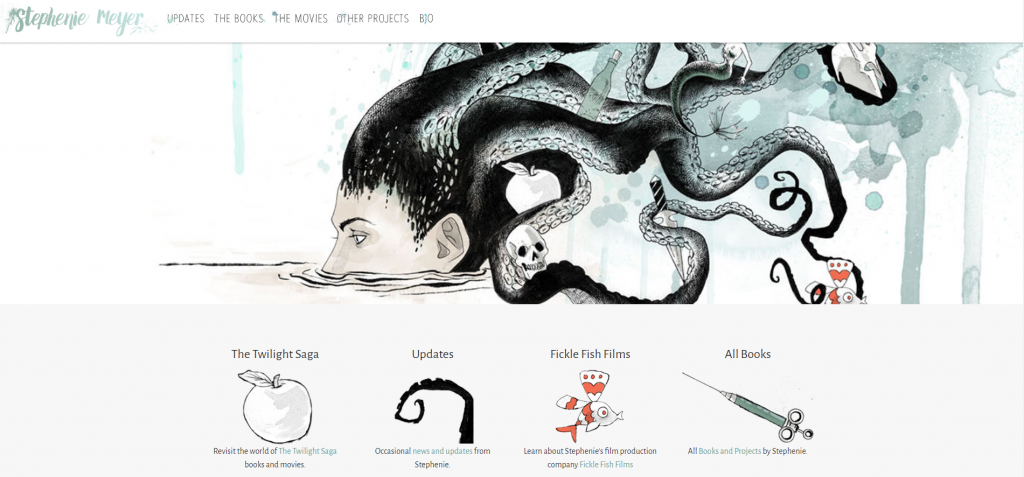
Author Funnel
One of the sections of your author website will be dedicated to sales. Book sales, pre-orders, fan swag, bonus materials, you name it. Make sure you invest some time into that so that the visitors will understand the current discounts and special offers you host.
You might consider pop-up notifications as kind reminders of what’s going on. And don’t neglect good old marketing tricks such as highlighting the discount section with special colors, old price vs. new price comparisons, gift images, etc. There are so many awesome funnel ideas for authors out there.
Keep in mind that a marketing funnel serves as a sales tool that attracts potential readers and develops relationships with them.
Search engine optimization (SEO)
Search engine optimization is one of the basic elements crucial for any online content. It means having a high ranking in the Google search results.
When it comes to the author website here’s what should be your top SEO priority:
- Backlinks
You want other authors, bloggers, YouTubers, and influencers to link back to your website. First, it shows Google that your website is important. Second, you create buzz around your author website and author brand as a result. Boost your networking skills and start collecting those backlinks.
- Page keywords
Make sure each of your pages has an appropriate keyword or key-phrase. This might not be a significant change, but it’s always a fantastic idea to get some organic reaches. This way, you will explain to both google and your customers what the page is about.
- Blog content (if applicable)
And if you also manage an author blog, be sure to create great and unique content that will bring more visitors to your author website.
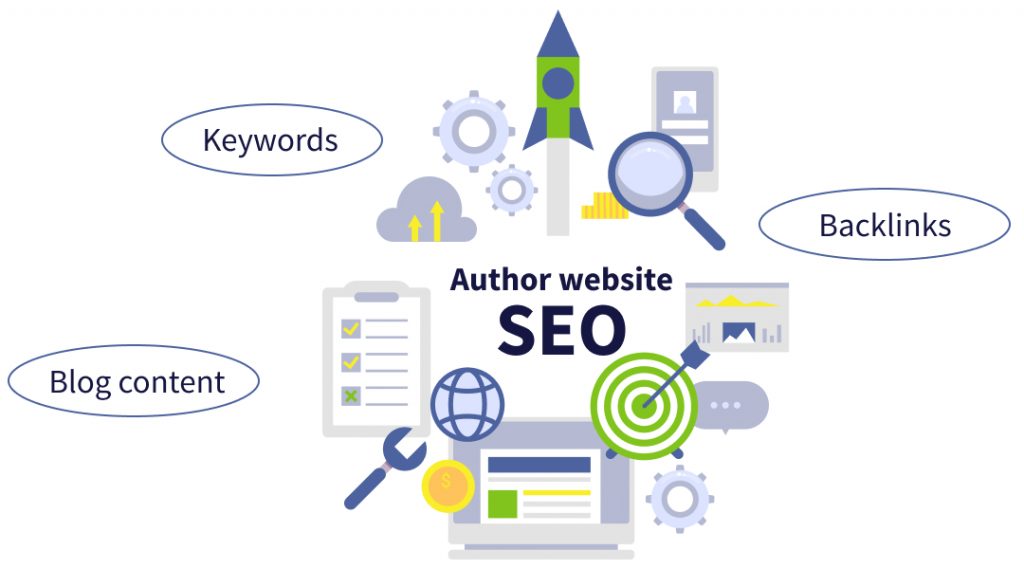
What are you waiting for? Improve your author website with search engine optimization and drive more traffic.
Design
When it comes to author website design, pay attention to two important elements: header and footer.
Header
The header is the area at the top of the page that most often includes the navigation menu and the banner.
- Present your name, information about your genre or writing style, and a few words about your target audience. Consider including all those details in a tagline.
- Invest in the design of a featured banner. You can modify that one depending on the book release process, or some other updates that you want the readers to see right away.
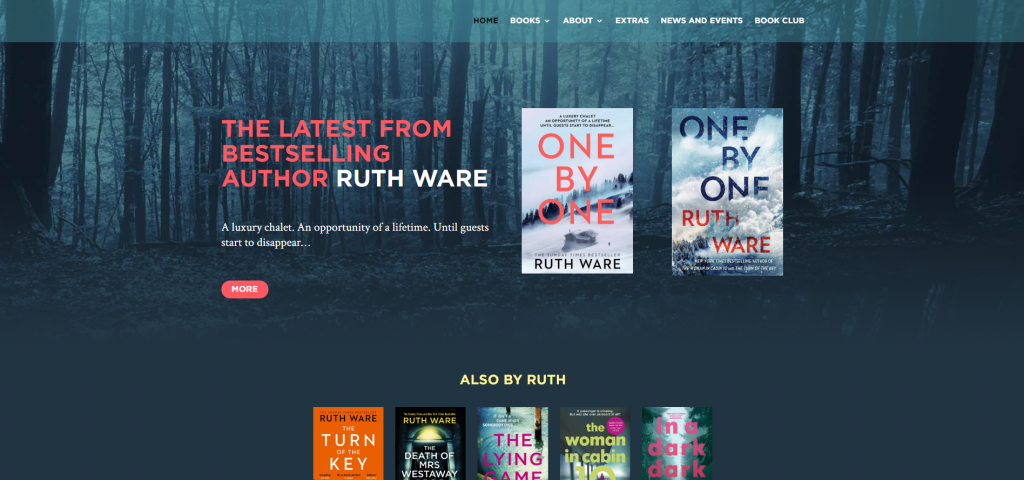
Footer
The website footer appears at the bottom of every page. Consider including the following information:
- social media links
- contact information
- call to action
- copyright notice
- additional navigation support
Toss in some great design, use different contrasting colors. Your visitors will appreciate it a lot.
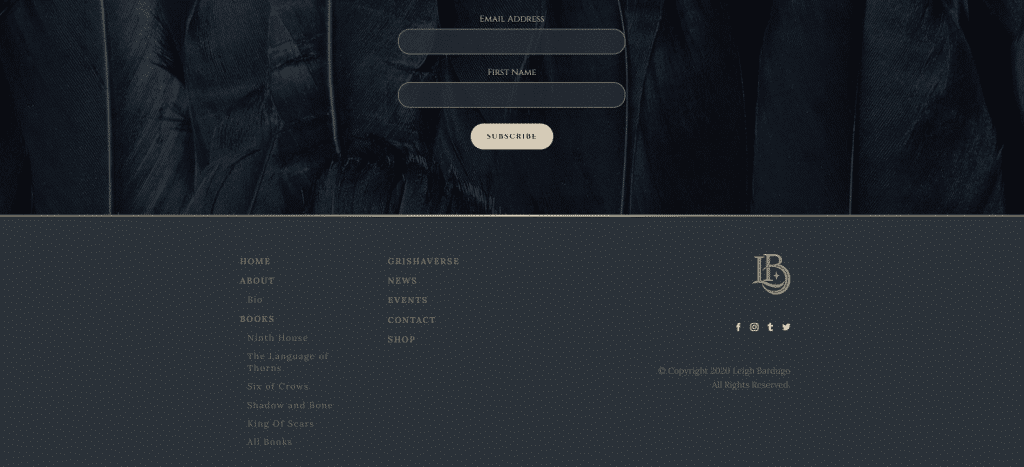
Calls to Action (CTAs)
What do you want to achieve through your author website? Do you want to get more sales for your latest book? Or would you like to grow your email list? Maybe you are looking for partnerships?
Whatever it is, tell that to your website visitors. Use verbs to encourage users. For example:
- Order the book
- Subscribe for updates
- Connect with me
Place the call to action on a button, use eye-catching colors, so that the readers immediately understand what’s going on.
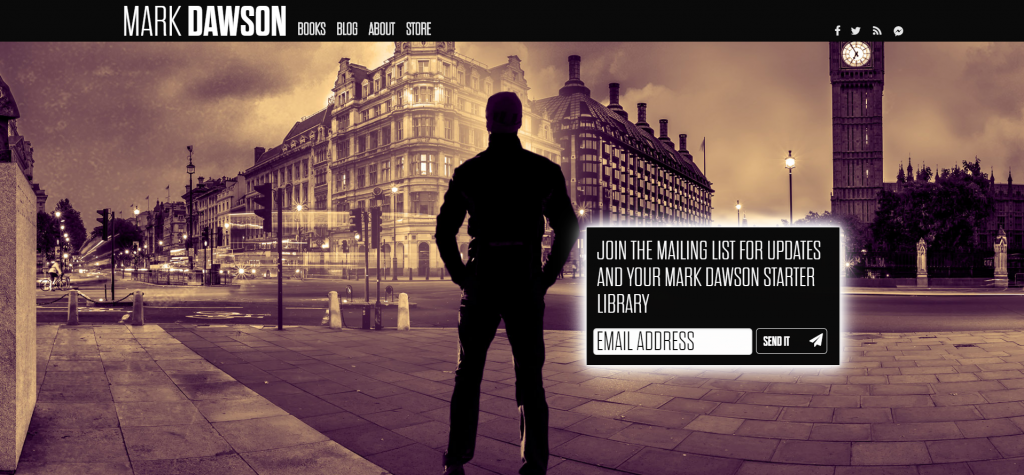
To sum up, ask yourself these questions once you are done creating your author website:
- Will people understand what I write within the first few seconds?
- Are the tone and mood of my author website suitable for my target audience?
- Will they know what the page they are on is about?
- Will the visitors know what to do next?
- Does the site look professional?
- Is it clear how and why the users should subscribe to my updates?
- Is there too much text and images on the page?
Now, let’s take a look at what pages your author website should have and what to include on each of them.
Author website elements
Here are the must-have pages that you should include on your author website:
- Homepage
- About
- Books
- Contact
Let’s take a closer look and get inspired by the stunning examples of author website elements.
Homepage
The homepage is the landing page – the first thing visitors see when they visit your website. It should be simple but also engaging.
- Basic information. First, explain who you are and why the potential readers should consider sticking around instead of closing the tab. Include your name, tagline, a brief description, and a headshot in the header section. The readers should start getting to know you. However, don’t overdo it on your home page. 300 words will work just fine.
- Book covers. Then toss in some book covers of your latest books (or only one) with a brief description and “read more” option. Don’t include too many books and a lengthy description. The visitors who land on your home page should not be scrolling down for ages to find something that might interest them.
- Social proof. Got some reviews from critics, influencers, publications, or loyal readers? Well, they belong here on your home page. Again, if the review is a page long essay, stick to the “read more” trick. Or maybe your book won an award recently? Don’t forget to mention it. If you are just getting started, your testimonials section might be modest, but we recommend not skipping it. The readers are more willing to get your books if you establish the social proof of your work.
- Email subscription box. We’ve been through this before. It’s your leading CTA. You want to build your email list through your website. Include an invitation to subscribe on your homepage.
- Social media accounts. If you haven’t included the links to your active social media pages in your footer, as we discussed before, do it now.
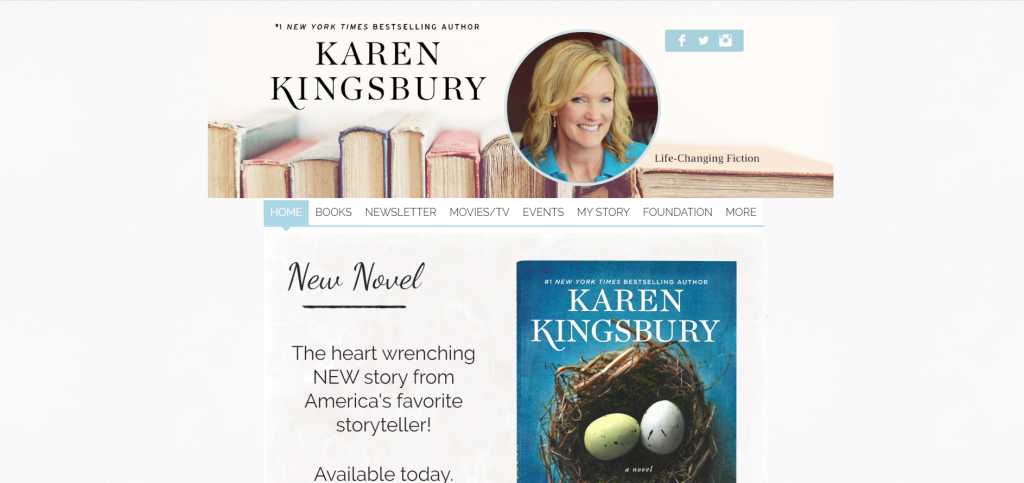
About page
As you might have guessed, in the About section, you might elaborate on who you are. Describe yourself, your self-publishing journey, and your career.
- Explain what your mission is.
- Talk about your author brand.
- Do you host some online events or readings? It falls into the category about you, doesn’t it? Include that information.
- Have you been recently interviewed? Again, the link to that interview belongs here.
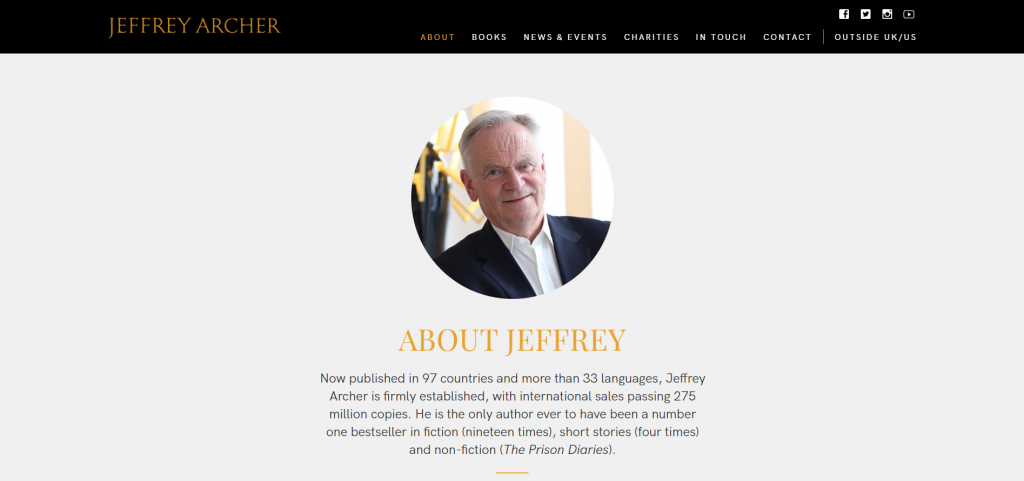
Books
This is the place that will function as your book portfolio. It’s especially important for fiction writers. The Books page is an overview of everything you have written.
Pro tip: showcase the books in the reverse chronological order.
For each book, you should include the following information:
- Book cover
- Title
- Short description
- Link to buy a book (Amazon, or direct)
- Read more section (Optional. It might lead to a separate page for every book. Include a more detailed description, reviews or testimonials, and some additional materials)
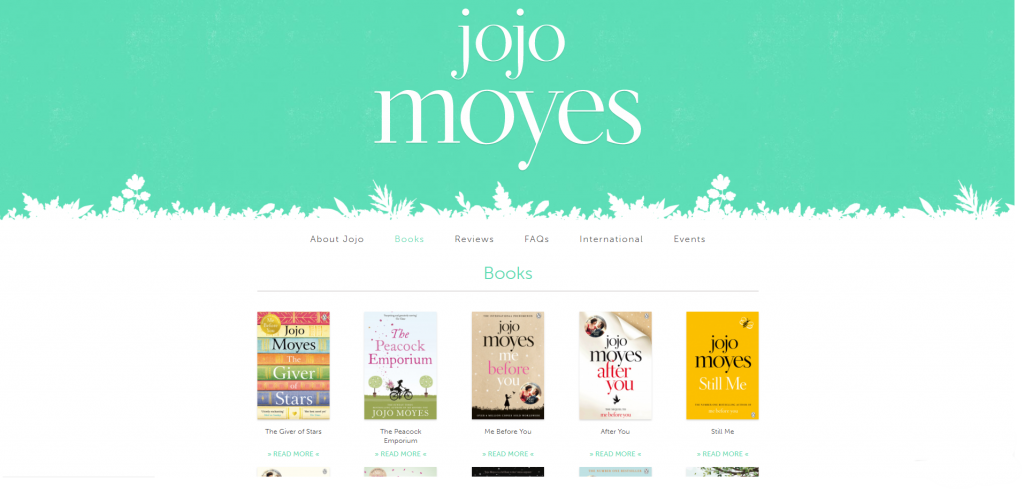
Contact
Every website, no matter what its purpose is, has a contact page. Tell your readers how they can reach you.
Here are a few ideas:
- Email address. Just include your email with a few catchy sentences to encourage the readers to say “Hi”.
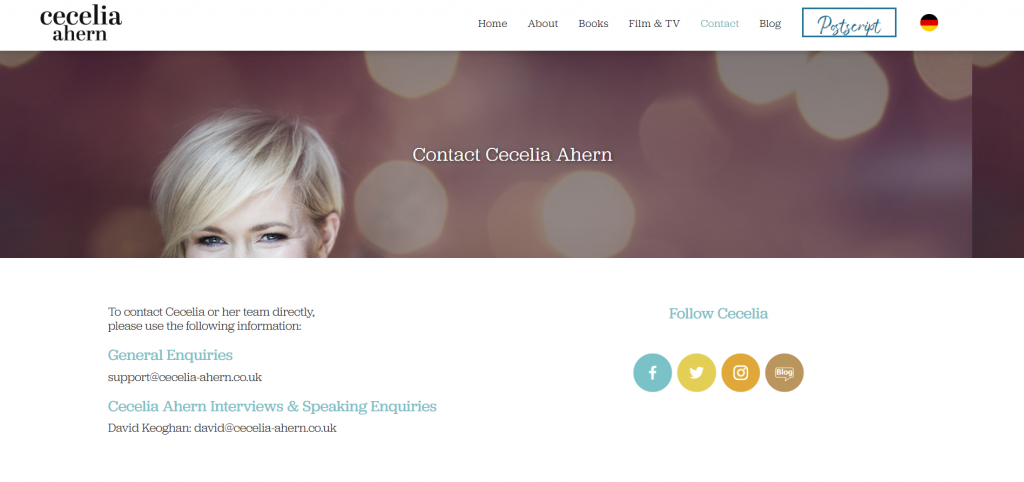
- Contact form. This is the most popular and highly recommended one. It’s incredibly convenient for both you and the users. They need not take any extra steps, but just fill in the form. And you will receive the message directly in your mailbox.
Other pages
There are some other pages you might include on your author website, or add them later on.
Blog
Whether or not you’d like to write a blog to attract more readers, is a whole different topic of discussion. If you will go down the blogging road, keep in mind that you should create unique, high-quality content. Don’t jeopardize your reputation by running a poor quality blog. No matter what you are writing, make it shareable on social media, and encourage discussions in the comments section.
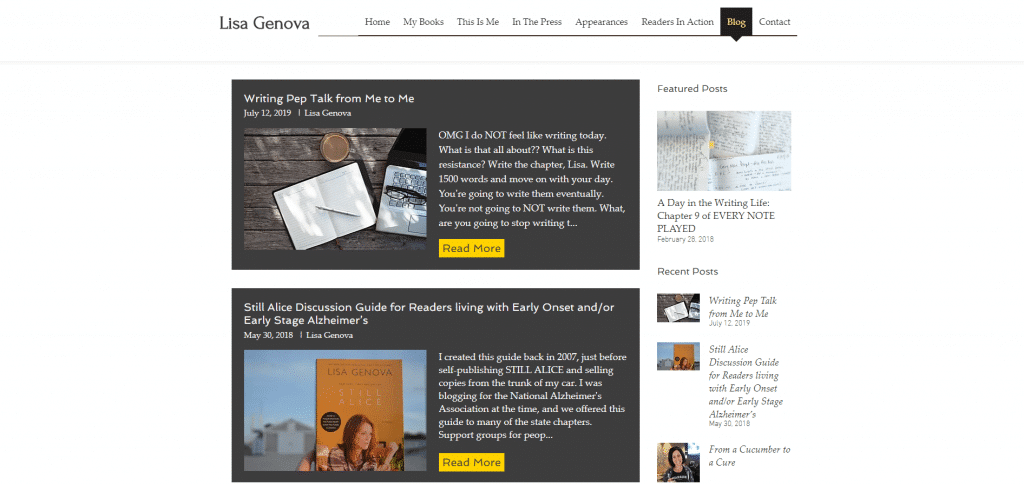
Events
This section falls into the category of “ifs”. If you are taking part in public speaking, organize online workshops, host book readings, support and participate in other events, have a book tour, etc. Mention all of it.
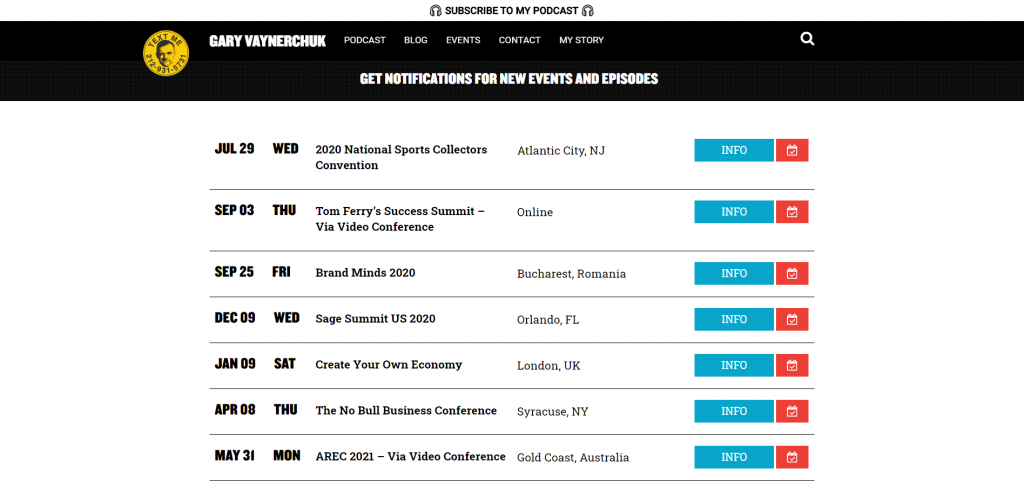
Hope we managed to help you understand what you should pay attention to when it comes to your author website elements.
And now, let us show you some of the best author website examples.
Author website examples
We would like to give you a small inspirational boost. We have gathered some awesome websites, highlighted what author website elements impressed us the most, and included a link. Explore them on your own. Have fun!
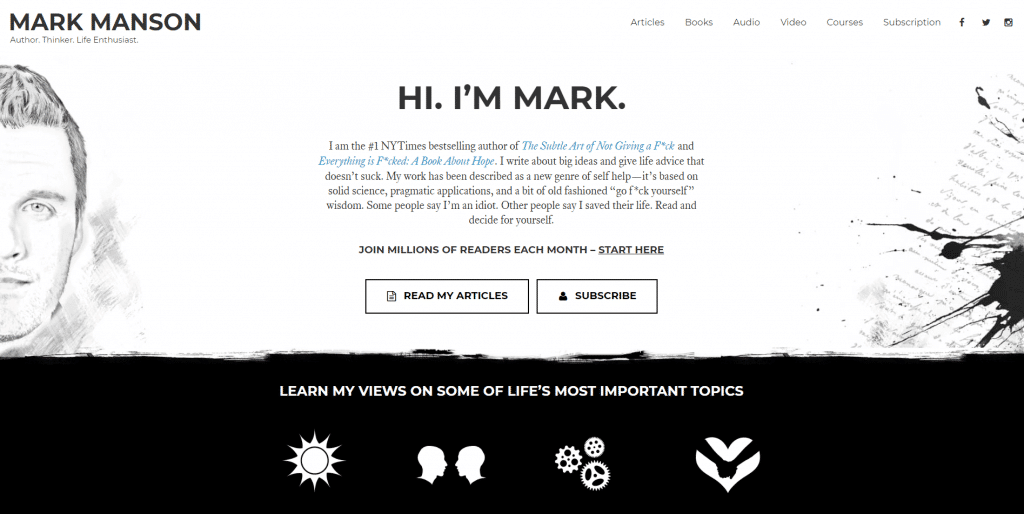
Best practices: clear layout, excellent black and white design, great choice, and placement of CTAs.
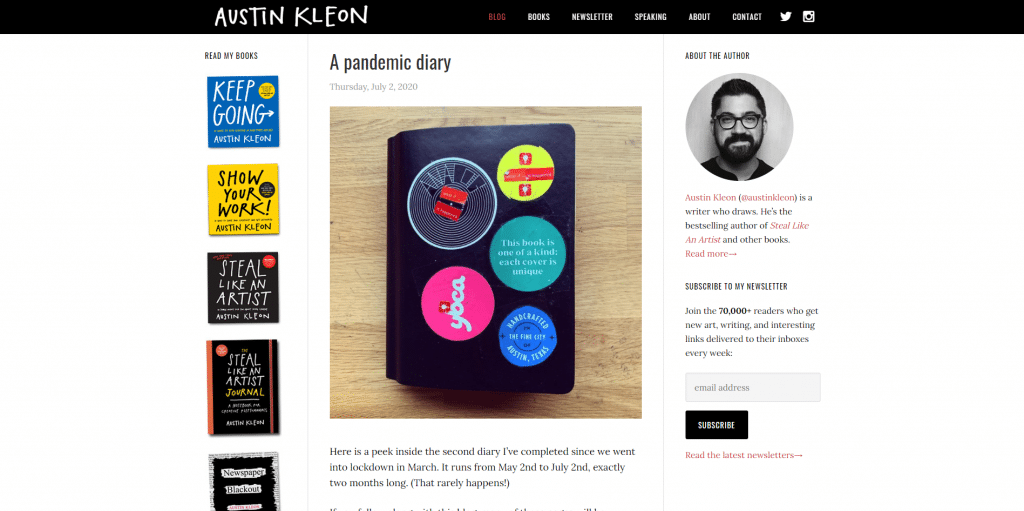
Best practices: books section, author funnel, footer design, a pandemic diary.

Best practices: clear navigation menu, unique design, branding.
Wrapping up
We hope we managed to answer all your author website related questions, and inspire you with examples of the must-have author website elements. If you already run the author website, copy the link in the comments section below. Let’s connect.

